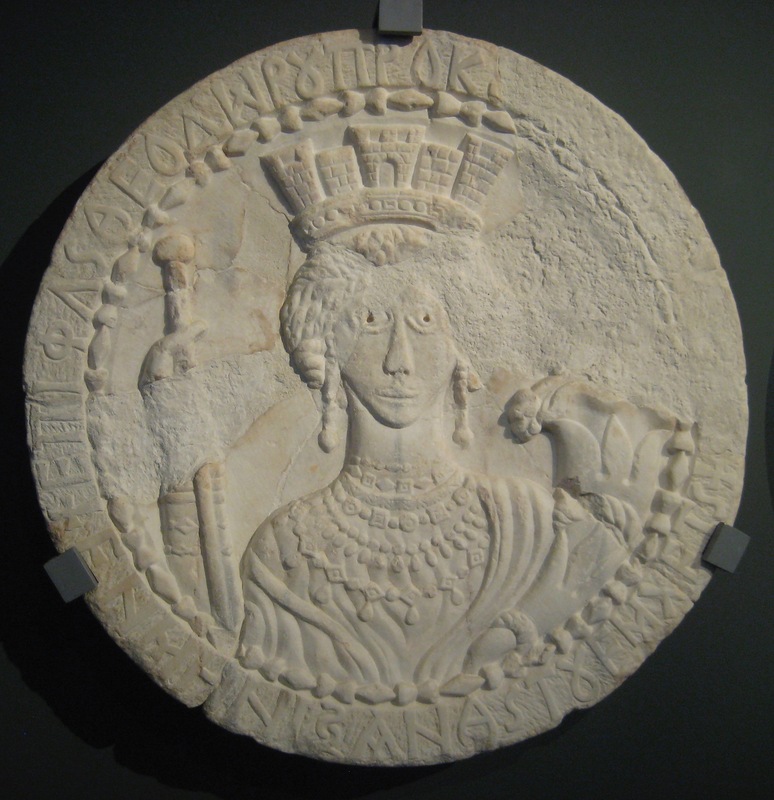Tyche in a church
Type:
Sculptures
Date:
582
Location or Findspot (Modern-Day Country):
Israel
Medium:
Marble
Dimensions:
67 cm diameter, 5.5 cm thick
Description:
An excavation at rural Hurvat Tinshemet (Israel) in 1995 uncovered the foundations of a sizable three-aisle basilica preceded by a narthex and atrium with an adjacent oil press. The sixth-century church (abandoned in the eighth century) had a marble altar and chancel screen. Its mosaic pavement, which consists mostly of floral and geometric motifs, contains a Greek inscription that states, "This is the place of the Lord Jesus," supplemented by a mosaic cross. An inscription found nearby refers to St. Bakchos (or Bacchus), a martyr and popular military saint (usually paired with St. Sergios), so perhaps the church was dedicated to him or to them.
The most surprising find was a marble medallion found in pieces scattered in the church. It bears a relief image of a Tyche (Greek for Fortune), a goddess whose crown takes the form of a city wall and gate. She holds a cornucopia and a scepter, symbols of prosperity. Her multiple necklaces resemble the Byzantine jewelry embroidered on the garment of Queen Bathild from late seventh-century France. Around the circumference is a Greek inscription that reads, in the upper half, "In the name of Flavius(?), son of Theodore . . . " and, in the bottom half, "in the month of Xanthikos [April] in the year 645," which is 582 CE. The inscription begins with a cross, helping to Christianize this classical personification for placement in a Christian worship space. The marble came from western Asia Minor, but in the absence of good comparisons, it is not known whether the roundel was carved there or in Israel.
The most surprising find was a marble medallion found in pieces scattered in the church. It bears a relief image of a Tyche (Greek for Fortune), a goddess whose crown takes the form of a city wall and gate. She holds a cornucopia and a scepter, symbols of prosperity. Her multiple necklaces resemble the Byzantine jewelry embroidered on the garment of Queen Bathild from late seventh-century France. Around the circumference is a Greek inscription that reads, in the upper half, "In the name of Flavius(?), son of Theodore . . . " and, in the bottom half, "in the month of Xanthikos [April] in the year 645," which is 582 CE. The inscription begins with a cross, helping to Christianize this classical personification for placement in a Christian worship space. The marble came from western Asia Minor, but in the absence of good comparisons, it is not known whether the roundel was carved there or in Israel.
Relevant Textbook Chapter(s):
3
Repository and Online Resources:
• Read about this find (IAA 1996-3434) on the Israel Antiquities Authority website.
Image Credits:
Linda Safran

